

He 219A-7

The Heinkel 219 is often referred to as the premier night fighter of WWII. While this certainly seems to have been the case based on operational successes there are differing opinions on the subject. As with many aircraft designed during the middle war years, its development period was long due to the pressures of war, constant changes in requirements by the RLM and failure of the desired engines to reach production status. The 219 was never available in the quantity required to have a major effect of the nocturnal activities of the Allies.
The He 219 began as a study by the Heinkel works in the Summer of 1940. The design submitted to the RLM incorporated such advanced features as pressurized cockpit, auto pilot, remotely controlled turrets and a tricycle land gear arrangement. It was to fulfill long range reconnaissance, bomber escort, dive bombing and torpedo dropping functions. It provoked little interest at the time. However in February of 1941 a conference between the RLM and the Heinkel design staff was held as it seems the RLM had decided that there was a use for Heinkel's concept initially for reconnaissance. Later the requirement for a horizontal day bomber and perhaps a night bomber would be added as well. The design was to use the Daimler Benz power plant consisting of two coupled DB 603 engines. By March of 41 prototype construction had been sanctioned but in June the RLM changed gears again and decided to drop the multi functional role and go for reconnaissance only. This also included a bunch of other changes including dropping the tricycle landing gear in favor of a conventional gear, so Heinkle went back to the drawing board. Another round of changes took place in October of 41 , this time the RLM dropped the long range reconnaissance version and replaced it with a triple role two man Zerstorer, night and high altitude fighter. Since the coupled DB 613 engines were having serious problems they were to be replaced by DB 603's. By January of 42 the alternative night fighter was finding increasing favor with the head of the night fighter arm. It was considered as a possible replacement for the Bf 110, Do 17Z and 217J and the Ju 88C all which were being operated as stop-gap night fighters.
After much vacillation in September of 1942 a firm commitment for 12 prototypes and 173 preproduction He 219A-0s was issued. These were to be produced between March of 43 and September of 44. Material for another 117 aircraft was to be sought to set up an additional assembly line in January of 44. A meeting was held in Berlin in September of 42 to review current requirements and reflecting a changed viewpoint on the part of Field Marshal Milch, the Ju 188 received the highest priority based on the reality that it was already flying and a proven design. It was pointed out that the He 219 would make its first flight a full six months before the Ju 188 could be modified to meet the night fighter requirements. It also required more materials and would be slower than the He 219. Milch on the other hand felt that the Ju 188 represented a lower risk and thus was his choice.
The prototype flew for the first time on November 15, 1942. While the prototype met expectations for speed and altitude it needed modifications to eliminate vibration and instability problems and subsequent prototypes did not have nearly the performance of the V1. A trial was held between the 219 and a rival Ju 188 in which the Ju 188 was bettered by the 219. As late as January of 43 no firm decision had been made to mass produce the He 219 as a night fighter. The 127 prototypes and A-0 series and 94 a-1 series on order were to be delivered as Zerstorers. A determined effort to kill the He 219 was still being made in February of 43 at a meeting at the RLM it was stated that the performance of the Ju 88 and Ju 188 was completely satisfactory for night fighting. It was proposed that the He 219 be dispensed with in spite of the fact that the cockpit layout was favorable and it was being investigated as to whether it could be grafted onto a Ju 188. Milch ordered that these points should be placed before Goring in the presence of General Kammhuber.
By March of 1943 four 219 prototypes had flown and the general opinion on the type was good enough for the RLM's production planning department to sanction the assembly of 120 A-0 versions and a 628 A-1's. In spite of this, controversy still raged over the most suitable type to use in the night fighting role. In an effort to decide once and for all Kammhuber (possibly supported by Hitler) ordered Major Streib to work up a trial unit of He 219's within his group 1/N.J.G.1 then based at Venlo in the Netherlands and currently operating Bf 110's. On the night of June 11-12, 1943 Major Streib and his radar operator Fischer were aloft in a He 219 and succeeded in downing 5 British heavy bombers heading for there target of Dusseldorf. Nearly 1/8 of the total downed by the Luftwaffe that night making the 219's debut a dramatic one. Field Marshal Milch however remained unimpressed. In a meeting on June 15 he stated that perhaps Streib would have had just as much success flying another machine. This seesawing over the production of the 219 continued through the balance of the war and wasn't concluded until the emergency fighter program was put in place which put an end to almost all propeller driven aircraft in favor of jets. The 219 continued to be improved and modified both in armament and equipment. Many of the changes and improvements were the result of feedback from front line units. To fully appreciate the chaos of the times one needs to read the complete history. The A-7 version was the last production version and contained many of the improvements that had been either found necessary or were highly desired by the crews that operated them.
The Kit
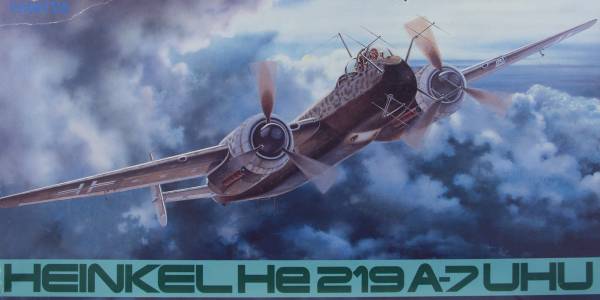
The Tamiya He 219 kit comes in a two part top open box with nice artwork on the top. Maybe it's just me but Tamiya boxes always seem to have a quality look and feel about them that gives you a feeling that what's inside is high quality as well. Inside the box there are five bags of parts. All but one of the bags has one sprue a piece, one bag has two duplicate sprues. The clear parts were bagged separately and was included in one of the larger bags. The parts are molded in a medium gray plastic with a smooth glossy finish. Panel and fastener detail is recessed. The panel lines are fine and consistent. There is some raised detail such as hinges and areas that had plates added to the original surface. Looking over the main air frame parts, I found no sink holes or other surface defects. There are some light ejector pin marks in the cockpit area that will show and on the inside of the gear doors. These were also light. The kit parts are virtually flash free and the smaller parts have only a light amount of parting line detail to clean up. The control surfaces are all fixed except the flaps which may be displayed up or down. The kit features a cast metal piece to which the cockpit detail overlays and this supplies the necessary amount of weight to keep the nose on the ground. The cockpit is pretty nicely detail right out of the box and includes two crew members, only bad thing is that they are twins. Altogether there are 123 parts in gray. The clear parts are thin and clear and the canopy is in two parts so it can be displayed in the open position. total for the clear parts is 8 plus the cast metal part gives us a grand total of 132 parts. See photos below.
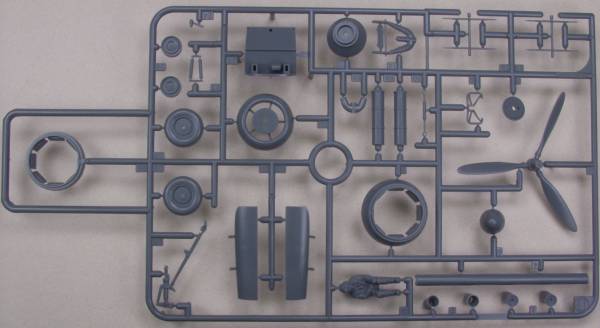
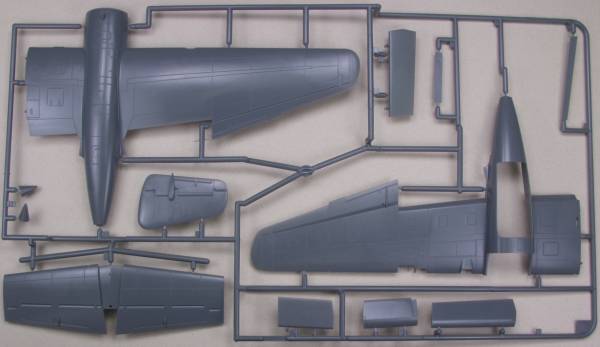
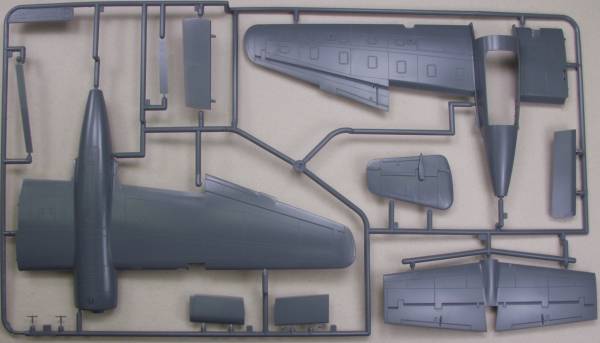
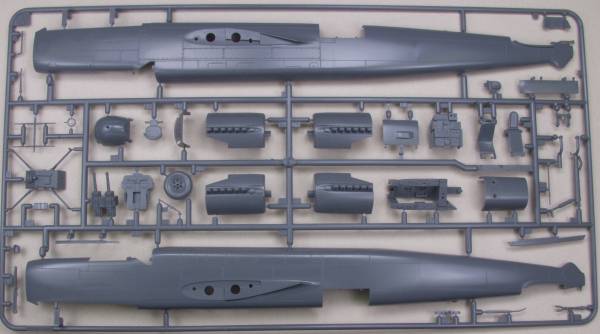
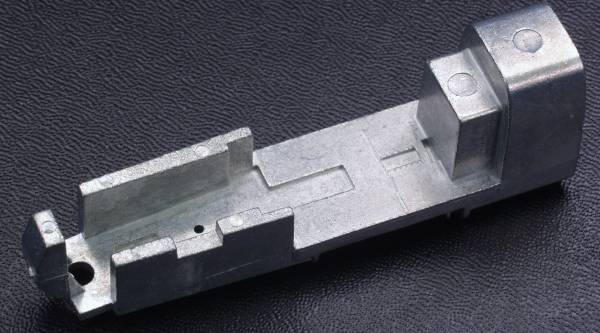
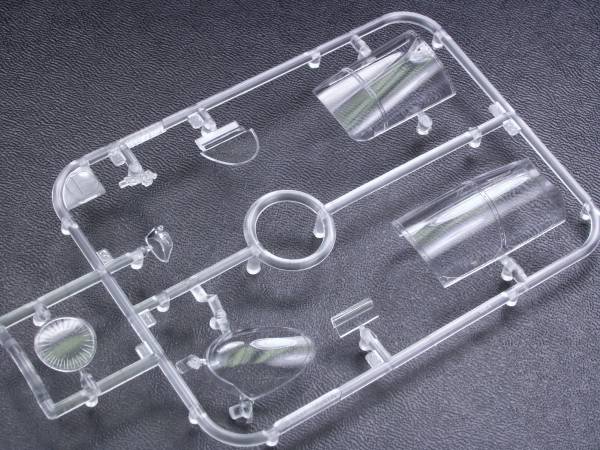
The decals appear thin but the black on white crosses and the night fighter badge are badly out of register. Every thing else seemed OK and swastikas are included. The sheet also includes harnesses for the seats and instruments for the instrument panel. The decals provide markings for two aircraft. See below.
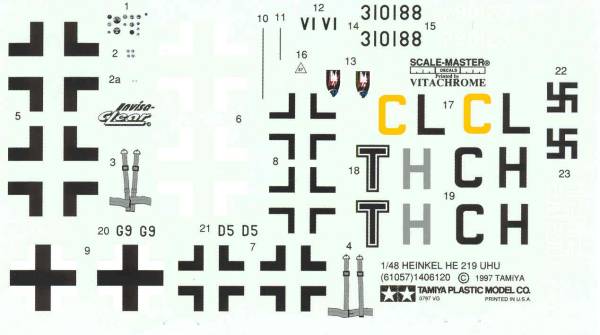
The instructions are typical Tamiya, a long sheet folded into ten panels. Page one has history, page two lists tools and paints required and starts assembly, the next six pages cover assembly and the last two cover painting and decals for one aircraft. There is a supplementary sheet that covers a second aircraft and a third sheet drawn to full scale showing the top camouflage scheme. This could be used as a mask for painting if desired.
After Market Goodies
I decided not to go nuts with aftermarket on the 219, if you check the review links you will find some that did. What I did decide on was an antenna set from Cutting edge [CEC48210]. This set is now out of production but can probably be found on eBay or elsewhere. It consists of a replacement resin nose with the antenna mounts molded to it and five cast brass antenna pieces. While the kits antenna, if fairly close to scale size, are also very delicate. The cast brass pieces are nice and thin and also will withstand being bent a few times without breaking. It comes with the four front mounted antenna and the one rear facing antenna. The instruction sheet is an 8 1/2" x 11" page printed on one side. See photo below.
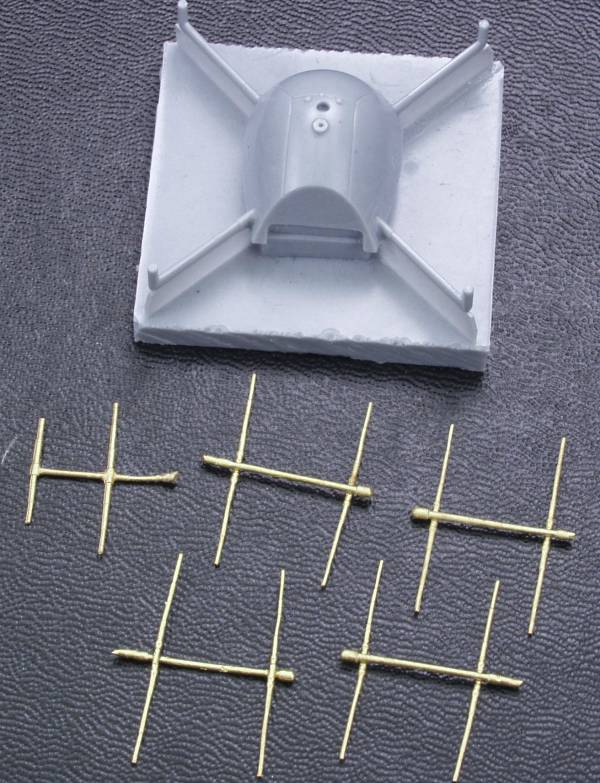
I also decided to go with an Eduard photoetch set [48213] This includes two frets which add harnesses and belts to the seats, rudder pedals instrument panels with films, a variety of levers and overlays to dress up the interior, grills for the the flame dampers and wing inlets, radiators for the cowlings, loop, towel bar and other antennas including the radar antennas and a side wall for the nose wheel well and a few other bits and pieces. The photoetch radar antenna are too one dimensional for me but some seem to like them. The instructions were on a single A4 size sheet printed on both sides with diagrams and icons to call out required operations in typical Eduard fashion. See below for photo of the set.
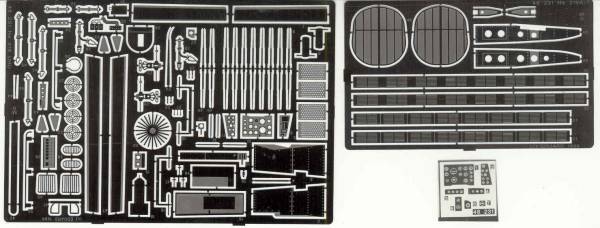
Even though the above set includes the instrument panels and films when the newer Eduard color Zoom set [FE392] was released I picked it up as well as my painting skills on instrument panels is dismal. The set includes the panels in color and the seat belts and harnesses as well see below.
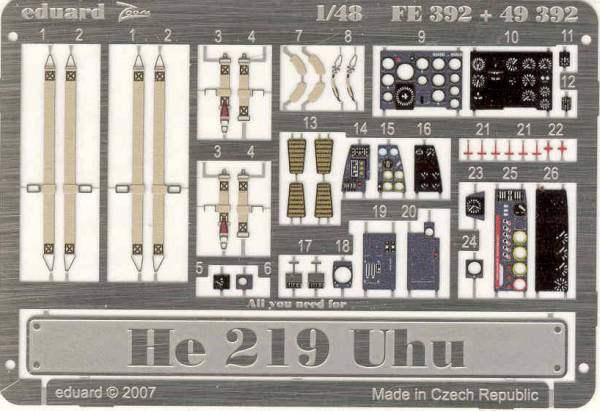
Conclusions
This kit has received mostly rave reviews since its introduction and after market suppliers have provided a plethora of add ons to dress the kit up even more. The kit does exhibit a few errors that the rivet counters have pointed out but most would not be noticed but us lessor mortals but I will address a couple of these during the build. I felt the detail level of the kit for the most part was adequate for my needs. There is a beautiful resin cockpit available but if you choose it you will not be able to used the clever nose weight that Tamiya supplies and will need to find other places to stuff weight to keep it from tail sitting. This is another well engineered kit from Tamiya and I would recommend it to modelers of all skill levels.
Links to kit build or reviews
Reviews can be found here, here, here, here and here ! As you can see this has been a popular model to build. The last link details the discrepancies that one modeler found and includes some excerpts from the 219 manual.
References
"Heinkle He 219" "An Illustrated History of Germany's Premier Night Fighter" by Roland Remp.
"Warplanes of the Third Reich" by William Green
"German Night Fighters in World War II" by Manfred Griehl
Luftwaffe Colours "NachtJager" series volume 2 by David P. Williams
Profile Publications # 219.
Updated 2/12/08